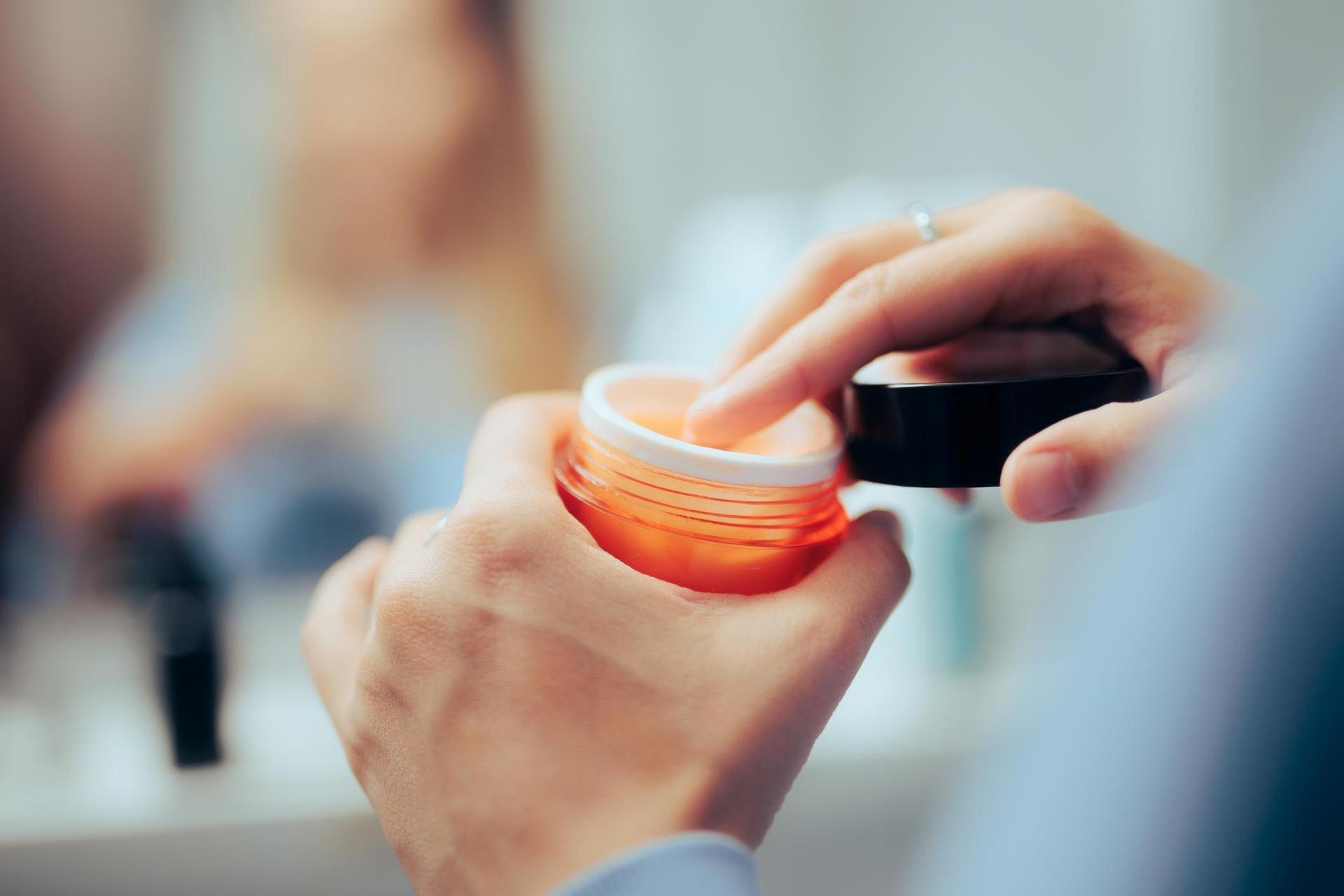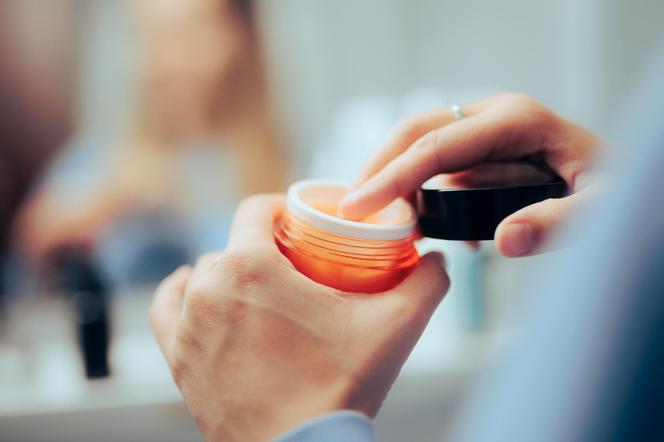
Facial cream is one of the most important elements in every woman’s cosmetics bag. We apply it under make-up and when going to bed. But – it’s not always the same! We choose face cream depending on the circumstances, skin type, season, but above all – on our age. Each of them has specific properties. Find out what the differences are between facial creams for women in their 20s, 30s, 40s, 50s, 60s and 70s.

Contents
Facial cream is not an easy thing. “Cream is cream” men sometimes say, but they are very wrong! There is no universal cream that is good for everyone. There are moisturizing, oiling and even mattifying creams. For day and night. Anti-wrinkle, firming and lifting. For oily, dry, normal and combination skin. Vascular, sensitive or atopic.
Finally, there are face creams intended for women of a specific age. As we age, the properties of our skin change and, for example, the ingredients we needed in our 20s may no longer be important when we are 40. And after some time, we will reach for another product to be sure that no matter how old we are, our skin is always properly cared for.
Face cream – how old are you?
If you are wondering which cream will be suitable for you, choose the one that states what age it is intended for women. It will be composed in such a way as to best care for the facial skin, taking into account the processes that are currently taking place there.
Many cream manufacturers also divide them into night and day creams based on age, so it’s worth buying both if you want to take care of your skin comprehensively. Night creams are more concentrated, thicker and fatter, nourish the skin better, and day creams contain UV filters and are usually in the form of a light emulsion because they contain more water than fat. Thanks to this, makeup stays on them better.
Face cream 20+
Should twenty-year-olds reflect on the passage of time? It turns out that absolutely. Between the ages of 20 and 30, cell renewal processes in the skin begin to slow down, collagen production declines, and the skin becomes more susceptible to the harmful effects of ultraviolet radiation and air pollution.
This leads to the first wrinkles and discolorations appearing around the age of 30, and the firmness of the skin decreases. You don’t have to wait for it. According to experts, prevention is better than cure. To delay this process, it is worth using 20+ creams. They contain substances that fight free radicals that penetrate the skin (under the influence of e.g. UV radiation) and lead to damage to the ceramides, cells, enzymes and collagen and elastin fibers contained therein. These substances include, for example, vitamin C and vitamin E, carotenoids, flavonoids.
20+ creams also contain sun filters that prevent wrinkles and fruit acids that ensure proper skin hydration. Just after the age of 20, we may still have problems with acne, which is why 20+ creams often also contain zinc and salicylic acid, which have a cleansing effect and reduce seborrhea.
Read also: Skin care after 20 – the most important thing is moisturization
Face cream 30+
Women in their 30s have slightly less elastic and slightly drier skin. Perhaps the consequences were an inappropriate diet, an irregular lifestyle, a lot of work and little sleep. All this is reflected on our face.
30+ creams still stop wrinkle formation processes, but they also contain ingredients that fight existing wrinkles. They also ensure proper nourishment of the skin. They contain, for example, retinoids (often unfortunately causing irritation) or AHA hydroxy acids (milder), which facilitate the removal of dead epidermis cells, as well as stimulate healthy cells and stimulate renewal processes. They influence the production of collagen and hyaluronic acid in the skin, which are responsible for its elasticity.
30+ creams also contain antioxidants, such as vitamin C, E and coenzyme Q10, which improve skin tone and eliminate discolorations. Some products are enriched with algae and skin regenerating peptides.
Read also: Acne after thirty – how to get rid of adult acne?
Face cream 40+
After the age of 40, facial skin care becomes more complicated. From that moment on, the firmness of the skin decreases significantly, it becomes more thin and less elastic. The muscles lose volume, which causes the face oval to change, and facial wrinkles, especially around the eyes, mouth and between the eyebrows, become more visible, and not only when we laugh.
Every 10 years, from about the age of 30, the number of cell divisions decreases by 10%, so after the age of 40 it is already clearly visible. Collagen and elastin fibers weaken, so 40+ creams should support their reconstruction, and therefore contain large amounts of retinol, i.e. vitamin A, and vitamin C – the higher on the list of ingredients, the better.
Retinol reacts with the sun, which is why such creams also have a higher UV filter. Discolorations caused by sunbathing, bruises and swelling often caused by smoking are also more visible on the face of a mature woman.
Cosmetics for women over 40 should improve the skin tone, so they contain coenzyme Q10, vitamins C and E, as well as wheat or rice proteins, which make the skin firmer and tighter. Creams for women in their forties have a heavier, thicker consistency because the hydrolipid barrier in their skin is already strained, and such a cosmetic will make the skin moisturized and oiled longer. However, in winter, this consistency will also protect the blood vessels from breaking.
Read also: Facial rejuvenation after forty
Face cream 50+
At this age, women’s skin has lost so much collagen that it is 10 times thinner than a child’s skin. Moreover, it becomes increasingly flaccid, rough and dry. Wrinkles are already visible not only on the face, but also on the neck and cleavage. During menopause, the entire hormonal balance of the body changes, e.g. the secretory activity of the sebaceous and sweat glands decreases.
Therefore, a 50+ cream should contain large amounts of collagen, which will make it elastic and moisturized, as well as phytoestrogens and oils that improve skin density. Its composition also includes retinol (vitamin A), which supports the production of new cells, and coenzyme Q10, which will not only improve the color, but also act as an elixir of youth: wrinkles will become shallower and the skin will be moisturized and regenerated.
A good 50+ cream should also contain hyaluronic acid, which ensures proper hydration of the skin, smoothes the epidermis and protects it against drying, and caffeine, which improves circulation.
Read also: Ingredients of creams for mature skin – properties
Face cream 60+
The skin of mature women is even more dry and thin, and now it ages much faster than before. If it has not been properly cared for so far, it has probably lost its elasticity, is flabby, and wrinkles are deep and visible.
The facial oval becomes less pronounced due to a reduction in the number of fibroblasts, whose task is to produce collagen, elastin and hyaluronic acid. The skin is easily irritated because its repair functions have significantly slowed down. Women of this age often struggle with discoloration, especially if they did not take enough sun protection in the past.
Therefore, 60-year-old women should use creams containing coenzyme Q10, retinol, collagen and vitamins in very concentrated amounts. 60+ products usually have intensely lifting properties. Some contain crimson algae extract, which tightens the skin on the face, others are enriched with oils, e.g. safflower, rice bran, Karite butter, which stimulate the production of lipids.
Read also: Mature skin – vitamins in cosmetics for mature skin
Face cream 70+
In 70-year-old women, the so-called “inverted triangle” effect occurs. If in young girls the face is fullest at the level of the cheekbones, in older women it is in the chin and jaw area. The skin becomes slack, sags, dehydrated, fat tissue loses volume, and the oval becomes irregular. The basis for the protection and care of facial skin over seventy should be moisturizing and sun protection.
Of course, a good 70+ cream also contains a large amount of antioxidants, such as vitamin C, which not only stimulates collagen production, but also delays skin photoaging and has anti-inflammatory and immunostimulating properties. Additionally, it strengthens blood vessels, improves skin tone and lightens discolorations. Of course, creams intended for 70-year-olds also contain retinol and coenzyme Q10. Some products contain an ingredient that supposedly stops the passage of time – stem cells, e.g.
